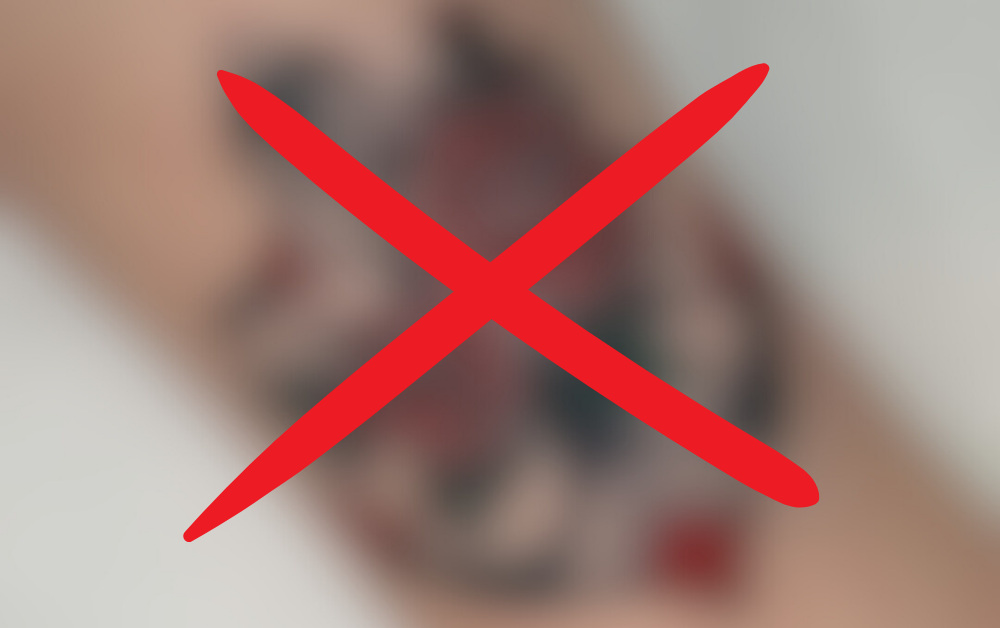An Important Editorial Correction
This article has been revised to correct a previous editorial oversight. While we may have featured tattoo designs in the past, this was a misstep that did not align with our platform’s core values. We are now reaffirming our principle that permanent body modification is a serious decision with physical, psychological, and spiritual consequences. For these reasons, we do not endorse or recommend getting tattoos. We thank you for your understanding as we ensure our content reflects our foundational principles.
The Enduring Appeal of the Anchor
The anchor is a powerful symbol, evoking feelings of stability, safety, and unwavering commitment. For centuries, it has represented a firm hold in stormy seas, making it a popular choice for those seeking to permanently express concepts like love, loyalty, and hope.
But before etching this “timeless classic” into your skin, it’s worth asking a deeper question: Can an image on your body truly provide the stability it represents, or does true steadfastness come from something much deeper? This article revisits the anchor tattoo, not as inspiration, but as a point of critical reflection.
Deconstructing the Modern Meanings
The original article suggested the anchor could symbolize many positive things. Let’s look at those ideas again with a more careful perspective.
The Illusion of Safety in an Image
An anchor is meant to provide protection and safety. However, real security in life is not found in a symbol. It is built through faith, strong character, wise decisions, and the support of a loving family and community. A drawing cannot hold you steady when life’s storms truly hit. True safety is an internal state of trust and reliance on something greater than oneself.
Love and Faithfulness: Actions Speak Louder Than Ink
Many see the anchor as a symbol of a committed relationship. While the sentiment is beautiful, love and loyalty are not proven with ink. They are proven daily through patience, sacrifice, forgiveness, and unwavering support. A tattoo is a static statement, while a loving relationship is a living, breathing commitment that requires continuous action.
Hope as an Inner Virtue, Not an Outer Visual
Can an anchor truly represent hope? Hope is a resilient virtue of the heart, the belief that calm will return after the storm. It is an active state of perseverance. Relying on an external image for hope can weaken our ability to cultivate it from within through prayer, patience, and positive action.
Beyond the Symbol: The Universal Risks of Tattoos
Regardless of the chosen design, the decision to get a tattoo carries universal risks that are often downplayed.
- Physical Consequences: The process involves repeatedly piercing the skin’s top layer to deposit ink into the dermis. This carries inherent risks of bacterial infections, allergic reactions to ink (which can appear even years later), scarring, and blood-borne diseases if equipment is not properly sterilized.
- The Burden of Permanence: The person you are today is not the person you will be in a decade. “Tattoo regret” is a widespread phenomenon. What feels profound now may become a source of embarrassment or a painful reminder of a past you’ve outgrown. The removal process is far more expensive, painful, and scarring than the initial application.
- A Spiritual Perspective on the Body: In many spiritual traditions, most notably Islam, the body is considered a sacred trust (amanah) from God. It is a gift to be cared for and protected, not to be permanently altered for cosmetic reasons. The principle is to honor the natural form created by God, and this core belief is a primary reason we no longer feature or endorse tattoos.
Conclusion: Build Your Anchor Within
The desire for stability, love, and hope is fundamental to the human experience. However, these profound qualities cannot be outsourced to a symbol inked onto your skin. They must be built within your character, cultivated through your actions, and grounded in your faith.
Instead of seeking a permanent image of an anchor, strive to be the anchor—for your family, your community, and yourself—through unwavering integrity and steadfast character. That is a legacy far more timeless and meaningful than any design.


